If you are using the workshop model to teach reading and writing, then mentor texts are an essential part of your instruction. Students can learn so much about reading and writing from digging deep into a picture book.
When you incorporate mentor texts into your reading and writing instruction, you are intentionally exposing students to different ways they can think about and approach the texts they read.
What is a mentor text?
A mentor text is exactly as it sounds. It serves as a mentor for reading and writing instruction. It is a text that should be read, reread, and studied in-depth.
Mentor texts can help students apply important reading strategies and skills to improve their comprehension, and mentor texts can help writers emulate and copy effective writing moves to become stronger writers.
Whether you are new to using mentor texts, or have been using them for years, here are ten tips that will help you use mentor texts more effectively.
10 Tips for Using Mentor Texts:
-
Use the same mentor text for multiple lessons. I love being able to re-read texts to students. Every time students re-read a text, they are able to extract or pull something new out of it. I will intentionally use the same text for multiple lessons. *Owl Moon by Jane Yolen is one of my favorite mentor texts. I will use that text when I teach visualization, and then re-read it again to teach figurative language, and then re-read it again when I review how to ask and answer questions. When students are familiar with a story, they are able to focus on the strategy or skill you are wanting to teach rather than the content of the text.
-
Use the same mentor text for your reading and writing mini-lesson. Reading and writing go hand in hand so it only makes sense that you would use the same text for your reading and writing mini-lesson. I try to keep my reading and writing content in alignment. If we are studying fiction in reading, then we are writing personal narratives or fictional narrative stories in writing. I like to pull my writing mini-lessons from the same mentor texts I use during my reading lesson.
-
Only read an excerpt from the text. I have heard a lot of teachers say they don’t like to use mentor texts because they don’t have time to read the entire book to their students…. to be honest, I used to use that excuse myself. The good news is you don’t always have to read the entire text to benefit from it. If you have one specific skill or strategy you want to focus on, only read the few pages from the text that support your objective. You can still effectively model a new skill to your students with only reading part of the book. AND, as an added bonus, your students will be so curious how the story ends, that they will ask to read the rest of it on their own. This is a great way to drum up excitement about independent reading.
-
Preview the mentor text before you read it. This is hard to do, but so important. A mentor text will only be effective and helpful if you know how you want to use it during your mini-lesson. You really need to read the text ahead of time so you know which reading and writing objectives work best with that specific text. The only way to figure that out is to read your mentor texts ahead of time.
-
Use sticky notes to write down questions or comments you want to share while you are reading. This will help you be able to use and re-use mentor texts year after year without having to re-read them. While you are previewing your mentor texts, jot down important questions or places you want to stop and share your thinking or model a skill. This will help you the following year when you want to use that same mentor text. You will already have notes on how you used that text in the past and you can either repeat that lesson or add on to it. And, as an added bonus, if you happen to be observed during your mini-lesson, the post-it notes serve as great evidence that you are planning and preparing for your lessons.
-
Put your mentor texts in your classroom library. Students love to re-read texts that you share with the class. I liked to have a bin or basket next to my reading chair with all the mentor texts we have read during the year. I would let me students check them out and put them in their book box. Sharing mentor texts with students is just another way to build and support a community of readers and writers in your classroom.
-
Make sure you ask more than just basic comprehension questions. While I was working as a literacy coach and assistant principal, I saw a lot of this: teachers would read texts to students and only ask them basic comprehension questions about the text. Who are the characters? What is happening in the story? What do you think will happen next? There was no mention of the strategies or skills that were needed to answer those questions. Remember, mentor texts serve as a mentor and guide to improve our understanding. Make sure you clearly communicate what skill or strategy you are using to help you answer those comprehension questions. When you model your thinking out loud to students, it helps them understand how to use that same skill or strategy when they read or write independently. This is one of the reasons why I love to quickly refer to an anchor chart during my mini-lesson. They serve as a great visual so students know the exact skill (or skills) we are working on while we are reading.
-
Refer back to the mentor text during writing and reading conferences. When you are meeting with students in a on-one-one setting, refer back to the mentor texts you have used. You can bring the actual text with you and re-model or show the student the exact skill you want them to practice using. Sometimes students need to see things more than once before it sticks. Pulling past mentor texts into your reading and writing conferences is a great way to do that.
-
Get your students to engage with the text. The whole goal of using a mentor text is to help your students think and approach their independent reading/writing in a new way. During your mini-lesson, get your students to engage with the mentor texts. You could ask them questions, have a whole class discussion, get them to stop and jot, have them identify examples… you want to give them a chance to engage with the text before you send them back to their desks to practice independently.
-
Always be on the lookout for new mentor texts. There are hundreds and hundreds of children’s books out there. While you might have your favorites, there are so many good ones that could be the perfect tool to help your students become stronger readers and writers. Try not to get stuck in the same rut and use all the same mentor texts year after year. Make it a point to research and find new texts to bring into your lessons. Maybe you read a new text every week, ever month, or even every semester. Just continue to read new texts and find new ways you can bring them into your community of readers and writers.
Sentence Writing Routine Free Sample
If your students struggle to write at the sentence level, this new literacy routine is going to be your new best friend. Each day of the week your students will engage in a quick (yet effective) sentence writing task that will help them become more confident and creative writers. Say goodbye to fragments and boring sentences, and say hello to complex sentences with lots of details!
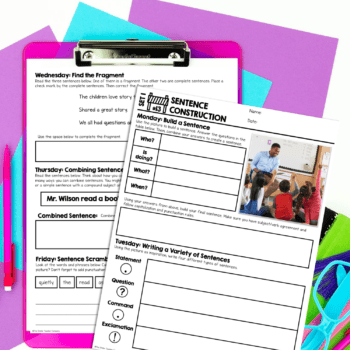


*This post contains an affiliate link, by using this link, I get a small portion of your purchase (at no additional cost to you). This helps me keep my business up and running which means I can share more teaching ideas and resources with you!


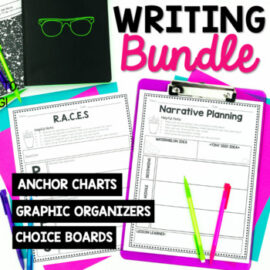
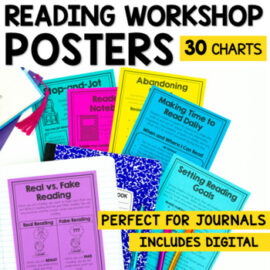
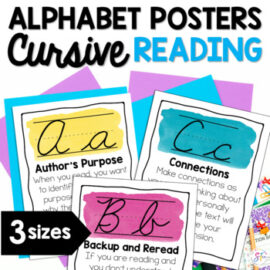
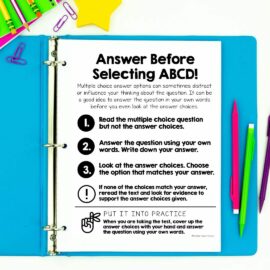
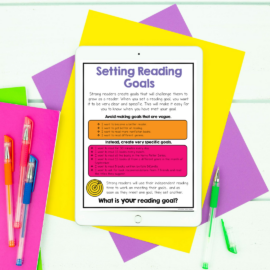
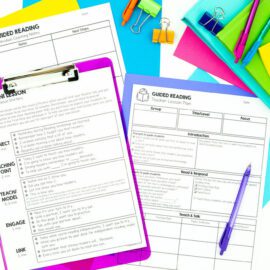




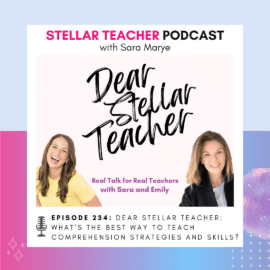




Leave a Comment
You must be logged in to post a comment.